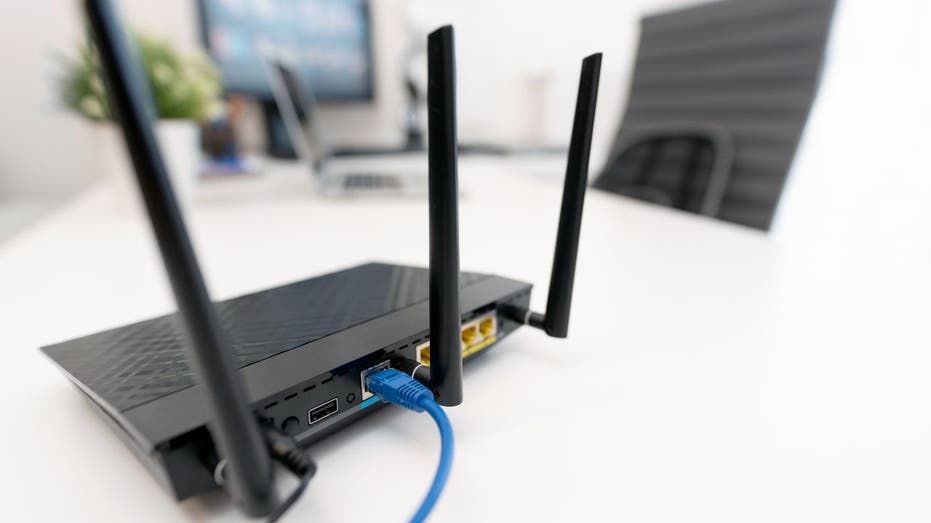- by foxnews
- 24 May 2025
Ignoring router security settings puts millions at risk from hidden dangers
Protecting your home network includes securing your router, just like your phone or laptop. Kurt "CyberGuy" Knutsson reveals six ways to protect your Wi-Fi router from hackers.
- by foxnews
- 25 Dec 2024
- in technology

If you're like me, your home Wi-Fi is at the center of almost everything you do online, whether it's online banking, paying bills, booking trips, chatting with friends or streaming movies.
These days, it's not just your laptop and phone connected to the network, but also things like security cameras, thermostats and even air conditioners are all managed by your router. But be honest, when was the last time you did anything to secure your router? It's easy to forget about it, especially if it's working fine. The thing is, a lot of people feel the same way, and a study reveals this "out of sight, out of mind" attitude could be putting millions at serious risk.
Similarly, 72% of respondents have never changed their Wi-Fi password. Default passwords are often easily accessible and can be exploited in seconds by knowledgeable attackers. Firmware updates, essential for patching vulnerabilities and enhancing router functionality, are also largely ignored. An overwhelming 89% of users have never updated their router's firmware. While newer routers often handle updates automatically, user awareness and action remain vital for those with older devices.
Another glaring issue is the failure to change default network names, such as "SKY12345" or "Linksys-7890." These identifiers can provide hackers with crucial information about the router model, making it easier to exploit known vulnerabilities. Yet, 89% of respondents have never changed their network name.
Alarmingly, 75% of users have never checked to see who is connected to their network. With an average home now hosting around 12 connected devices, failing to monitor network activity could lead to unauthorized access and potential data breaches. Even more worrying, three-quarters of respondents do not understand why adjusting router settings is important, showing a significant gap in awareness about the risks associated with default configurations.
"In 2022, we ran a similar study and found 48% had never touched their router's factory settings. It's concerning that not only has the number come down after two years, it's got worse," said Alex Tofts, strategist at Broadband Genie.
"Most concerning is the very high percentage of broadband subscribers who don't even know why they should be making any of these changes. This exposes a clear knowledge gap, and users need to be educated more about the simple steps they can take to help prevent cyberattacks."
Keeping your home network secure is essential to prevent unauthorized access and potential data breaches. Follow these steps to safeguard your Wi-Fi router:
1) Change default passwords: Most routers come with default passwords that hackers can easily find online. To secure your router, change both the admin password (used to access settings) and the Wi-Fi network password. Use a strong password with at least 12 characters, combining uppercase and lowercase letters, numbers and symbols. Avoid simple options like "password123" or personal details such as your name or birth date.
2) Rename your network (SSID): The default network name, or SSID, often includes the router's brand or model, making it easier for hackers to identify vulnerabilities. Rename your network to something unique that doesn't reveal personal information. Avoid using names, addresses or other identifiers. Instead, opt for a neutral or creative name that's easy for you to recognize but hard for others to associate with you.
3) Keep your router's firmware updated: Router manufacturers release firmware updates to patch security flaws and enhance performance. Check your router's admin panel regularly for updates or enable automatic updates, if supported. Keeping your firmware up to date ensures you're protected against the latest threats. If your router is too old to receive updates, it might be time to upgrade to a newer, more secure model.
4) Monitor network activity regularly: Unauthorized devices on your network can slow it down and expose you to risks. Log into your router's admin settings to view all connected devices. If you see anything suspicious, disconnect it and immediately change your Wi-Fi password. You can also enable MAC address filtering to control which devices can access your network or disable features like WPS (Wi-Fi Protected Setup) that may leave you vulnerable.
5) Enable network encryption: Use the strongest encryption protocol available for your router, preferably WPA3 or at least WPA2. Encryption scrambles the data transmitted over your network, making it much harder for hackers to intercept and decipher your information.
6) Regularly reboot your router: Schedule routine reboots to clear the system memory and refresh all connections, which may disrupt potential malware.
Pro tip: Use strong antivirus software: To further protect your devices from malware and other threats, consider using reputable antivirus software. Antivirus programs can detect and remove malicious software, provide real-time protection and alert you to potential threats. Keeping your devices secure helps ensure your entire network remains safe from cyberattacks.
Cybercriminals are constantly evolving the ways they target us, which means securing just your phone or laptop isn't enough anymore. You need to be cautious with anything connected to the internet, whether it's your router, smart cameras or doorbell. However, the Broadband Genie survey reveals that only a small number of people are aware of the best cybersecurity practices when it comes to protecting their routers. As a basic rule, always remember to change default passwords and rename your router's network to ensure better security.
Follow Kurt on his social channels:
Answers to the most asked CyberGuy questions:
New from Kurt:
Copyright 2024 CyberGuy.com. All rights reserved.
- by foxnews
- descember 09, 2016
Texas road construction unearths 'colossal' prehistoric remains of 'big ol' animals'
Archaeologists in Texas recently discovered prehistoric megafauna bones, including a giant ground sloth, during a highway project in Lubbock, according to officials.
read more





